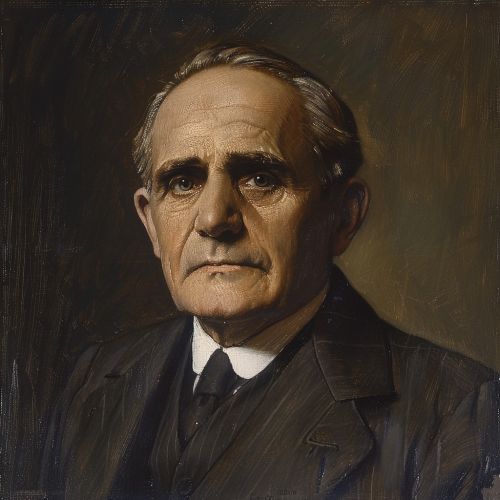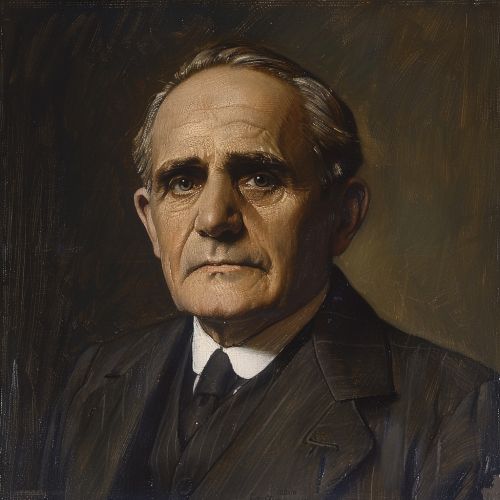Georg Simon Ohm
Early Life and Education
Georg Simon Ohm was born on March 16, 1789, in Erlangen, Bavaria, which was part of the Holy Roman Empire. His father, Johann Wolfgang Ohm, was a master locksmith, and his mother, Maria Elizabeth Beck, was the daughter of a tailor. Despite their modest means, Ohm's parents valued education highly and provided their children with a strong foundation in mathematics and science. Georg Simon Ohm showed an early aptitude for these subjects, which would shape his future career.
Ohm attended the Erlangen Gymnasium, where he received a classical education. However, his formal education was interrupted when he left school at the age of 16 to work as a private tutor. He continued his studies independently, focusing on mathematics and physics. In 1805, Ohm entered the University of Erlangen, but financial difficulties forced him to leave after just one semester. He resumed his work as a tutor, this time in Switzerland, where he continued to study and develop his understanding of scientific principles.
Academic Career
In 1811, Ohm returned to the University of Erlangen, where he completed his doctorate in mathematics. He then took a position as a teacher of mathematics at a secondary school in Bamberg. Dissatisfied with the lack of resources and opportunities for scientific research, Ohm moved to Cologne in 1817 to teach at the Jesuit Gymnasium. It was here that he began to conduct experiments on electricity, inspired by the work of Alessandro Volta and Hans Christian Ørsted.
Ohm's work at the Jesuit Gymnasium was challenging due to the limited laboratory facilities. Nevertheless, he persevered, using simple and often homemade equipment to conduct his experiments. His dedication to his research paid off when he formulated what would become known as Ohm's Law, a fundamental principle in the field of electrical engineering.
Ohm's Law
Ohm's Law, published in 1827 in his book "Die galvanische Kette, mathematisch bearbeitet" (The Galvanic Circuit Investigated Mathematically), states that the current flowing through a conductor between two points is directly proportional to the voltage across the two points and inversely proportional to the resistance of the conductor. Mathematically, this relationship is expressed as:
\[ I = \frac{V}{R} \]
where \( I \) is the current, \( V \) is the voltage, and \( R \) is the resistance. This law was revolutionary because it provided a clear and quantifiable relationship between voltage, current, and resistance, which could be used to predict the behavior of electrical circuits.
Despite the significance of his discovery, Ohm's work was initially met with skepticism and criticism from the scientific community. Many of his contemporaries were reluctant to accept his findings, partly because of the simplicity of his experimental setup and partly because his conclusions challenged existing theories about electricity. It was not until later in his career that Ohm's contributions were fully recognized and appreciated.
Later Career and Recognition
In 1833, Ohm was appointed as a professor of physics at the Polytechnic School of Nuremberg. This position provided him with better resources and more opportunities to continue his research. He published several more papers on electricity and acoustics, further establishing his reputation as a leading scientist in his field.
Ohm's contributions to science were eventually recognized by his peers, and he received several honors and awards. In 1841, he was awarded the prestigious Copley Medal by the Royal Society of London, one of the highest honors in the scientific community. In 1845, he was elected a foreign member of the Royal Society, further cementing his status as a respected scientist.
In 1852, Ohm was appointed as the curator of the Bavarian Academy of Sciences and Humanities, a position he held until his death. He continued to work on various scientific projects and remained active in the academic community until his passing on July 6, 1854.
Legacy
Georg Simon Ohm's contributions to the field of electrical engineering have had a lasting impact. Ohm's Law remains a fundamental principle in the study of electricity and is taught to students around the world. His work laid the foundation for the development of modern electrical engineering and has influenced countless advancements in technology.
In recognition of his contributions, the unit of electrical resistance was named the ohm in his honor. This unit is widely used in scientific and engineering contexts to measure resistance and is a testament to Ohm's enduring legacy.
See Also


References
- [Insert references here]
